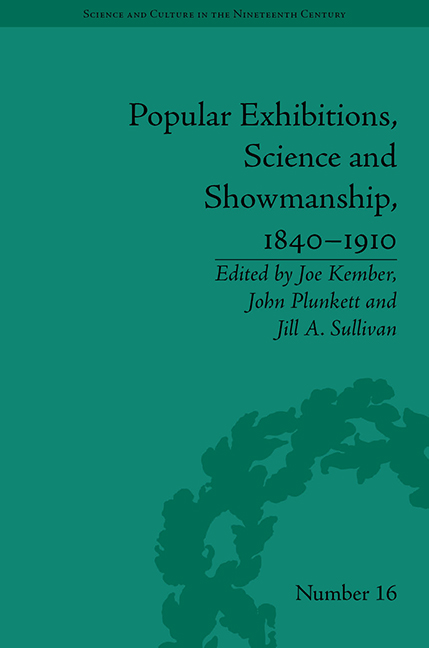Book contents
- Frontmatter
- CONTENTS
- Acknowledgements
- List of Contributors
- List of Figures and Tables
- Introduction
- Part I Science and Spectacle
- Part II Word and Image
- Part III Staging Knowledge
- Part IV The Politics of Display
- 10 Meeting the Zulus: Displayed Peoples and the Shows of London, 1853–79
- 11 Unwrapping the Past: Egyptian Mummies on Show
- 12 ‘The Wandering Friend’: Andrew Carnegie's Dinosaur Invades Europe, 1902–14
- Notes
- Index
12 - ‘The Wandering Friend’: Andrew Carnegie's Dinosaur Invades Europe, 1902–14
from Part IV - The Politics of Display
- Frontmatter
- CONTENTS
- Acknowledgements
- List of Contributors
- List of Figures and Tables
- Introduction
- Part I Science and Spectacle
- Part II Word and Image
- Part III Staging Knowledge
- Part IV The Politics of Display
- 10 Meeting the Zulus: Displayed Peoples and the Shows of London, 1853–79
- 11 Unwrapping the Past: Egyptian Mummies on Show
- 12 ‘The Wandering Friend’: Andrew Carnegie's Dinosaur Invades Europe, 1902–14
- Notes
- Index
Summary
In the early afternoon of 12 May 1905, an illustrious gathering occupied the Hall of Reptiles of the British Museum (Natural History). The occasion was the unveiling of a cast of the North American sauropod dinosaur Diplodocus carnegii (or carnegiei, as incorrectly reported in most media), a gift of the Scottish-born American steel baron Andrew Carnegie (1835–1919) to the institution, by way of King Edward VII. For Carnegie, it was a moment of triumph for himself, for his charity campaigns, and for American drive and entrepreneurship. And maybe for that reason, some of the parties present regarded the gift with mixed feelings. Indeed, it was placed in the Gallery of Reptiles rather than the Gallery of Palaeontology because, as Museum Director E. Ray Lankester (1847–1929) did not forget to point out, that was already full of British dinosaurs. Lord Avebury, who accepted Carnegie's gift on behalf of the museum's trustees, was also somewhat condescending:
The size of the animal does not indeed necessarily add much to the interest … Still, size appeals to the imagination, and I do not doubt that this specimen will excite the admiration and wonder of all who see it.
Conversely, the press and the public's response was unequivocal. With some pride, the technician responsible for mounting the dinosaur, Arthur Coggeshall, would later claim that more visitors had come to see Diplodocus than had ever before visited the museum after its opening day in 1881.
- Type
- Chapter
- Information
- Popular Exhibitions, Science and Showmanship, 1840–1910 , pp. 219 - 236Publisher: Pickering & ChattoFirst published in: 2014



